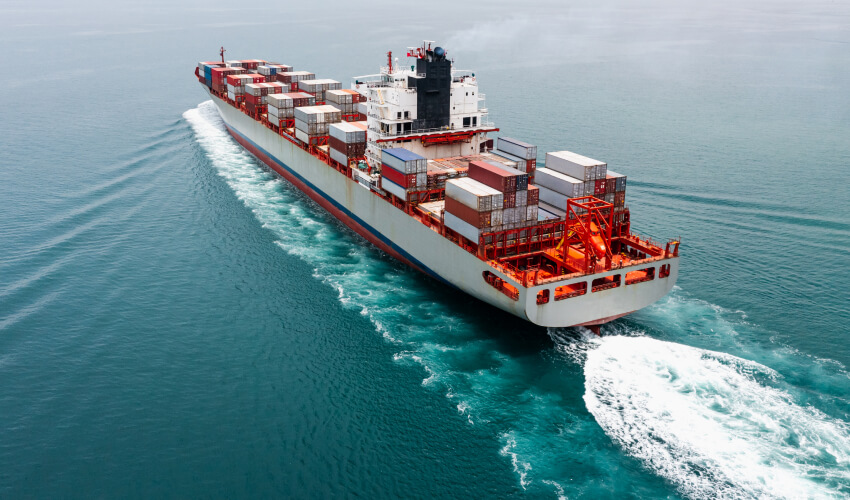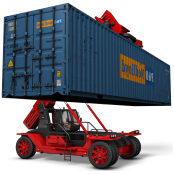
Increased buying power allows for competitive market pricing and higher service levels in ocean shipping. The flexibility that we have at Crane Worldwide Logistics with rail service providers and port of entry/port of discharge allows us to create the best ocean freight shipping solution for our clients with transit times to suit your delivery requirements. Need cost effective door to door ocean services? Reach out today for more information on how can support your freight shipments.

As a licensed Non-Vessel Operating Common Carrier (NVOCC) for both Full Container Load (FCL) and Less Than Container Load (LCL) shipments, our ocean freight forwarding experience at Crane Worldwide Logistics allows us to be your client advocate when negotiating with the increasingly large ocean carriers and shipping lines.
To help improve your supply chain efficiency and support shipping your cargo via ocean freight, our relationships with our ocean freight cargo partners allow us to create the best shipping options for our clients, ensuring your cargo is managed cost-efficiently. We partner with the global carriers to provide the best transit times covering all major ports to provide the most productive ocean freight solution for your business.
A great alternative to air freight, our ocean freight experts work with a range of ocean shipping carriers. Our services include:
Our door-to-door ocean transportation service, as well as our purchase order management and consolidation/deconsolidation methods, are all conducted with high service levels without a contractual obligation. International shipping is becoming increasingly complex, and we are here to partner with you to assist you with your ocean shipping needs. Whether FCL shipments or LCL sea freight shipments, Crane Worldwide can manage all of your documentation with competitive rates for your shipment providing complete ocean freight services.
There has been much change in the import and export markets, notably in the ocean freight and carrier market, the consolidation of some of the significant ocean freight players and IMO regulations. Our relationships with our crucial ocean freight shipping partners can benefit your overall sea freight strategy, and we will work with you as your client advocate to ensure you have the best ocean shipment profile to address your logistics needs.
Costs depend upon the type of shipping service you require, a number of factors to consider when planning your ocean freight shipment: Container size, Transit time, Cargo type, Cargo weight, Cargo dimensions and Incoterms, we can also assist with customs brokerage, reach out via the contact below for more information. Ocean shipping capacity availability can vary significantly, we are here to help you navigate any challenges you are facing with your ocean freight needs and develop customized solutions that can support your business.
A General Rate Increase in shipping is applied by the carriers dependent upon demand. It is a general rate that is applied across base rates on specific lines. These sea freight rate adjustments are made during a specific time frame as a surcharge. Crane Worldwide Logistics works in close partnership with our clients and carriers to communicate when a GRI is expected.
The chargeable weight is the greater of the package's actual weight or dimensional weight.
The introduction in the most recent version explains the purpose and use of the Incoterms® rules, identifies differences between Incoterms® 2010 and Incoterms® 2020
Free Carrier (FCA) has been revised for Incoterms® 2020 to cater to a situation where goods are sold FCA for carriage by sea and buyer or seller (or either party’s bank) requests a bill of lading with an on-board notation. FCA in article A6/B6 now provides for the parties to agree that the buyer will instruct the carrier to issue an on-board bill of lading to the seller once the goods have been loaded on board, and for the seller then to tender the document to the buyer (often through the banks).
All costs associated with a given Incoterms rule now appear at article A9/B9 of that rule, allowing users to see the full list of expected costs at a glance. In addition to the aggregated presentation, the costs associated with each item still appear in the respective articles to accommodate a user who wants to focus on a specific aspect of the sale transaction.
The Incoterms® 2020 rules provide for different levels of insurance coverage in the Cost Insurance and Freight (CIF) rule and Carriage and Insurance Paid To (CIP) rule.
CIF Incoterms® rule, which is reserved for use in maritime trade and often used in commodity trading, the Institute Cargo Clauses (C) remains the default level of coverage, giving parties the option to agree to a higher level of insurance cover. The CIP Incoterms® rule now requires a higher level of cover, compliant with the Institute Cargo Clauses (A) or similar clauses.
It recognises that not all commercial trade transactions from the seller to the buyer are conducted by a third-party carrier.
The latest edition includes clearer and more detailed security-related obligations in articles A4 on carriage and A7 on export/import clearance of each Incoterms® rule. Costs relating to these requirements also appear in the consolidated costs article, A9/B9.